Are you looking to secure a position in the dynamic aviation industry? Crafting the perfect letter can be the key to standing out among a sea of applicants. Whether you're aiming for a role as a pilot, engineer, or in air traffic control, your introductory letter should convey your passion and qualifications succinctly. If you're ready to take the next step in your aviation career, read on to discover essential tips and templates that will help you soar above the competition!
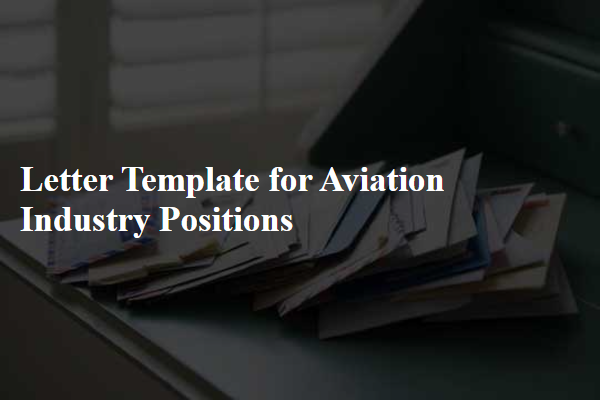
Industry-specific terminology
In the aviation industry, compliance with Federal Aviation Administration (FAA) regulations is critical for maintaining safety and efficiency in operations. Aircraft maintenance technicians must possess a deep understanding of airworthiness standards and the importance of regular inspections. Utilizing tools such as digital maintenance tracking systems, technicians enhance documentation accuracy and streamline processes. Knowledge of advanced avionics systems is essential, as these technologies play a vital role in flight safety and navigation. Moreover, effective communication within diverse teams--consisting of pilots, air traffic controllers, and ground crew--ensures smooth operations at international airports, such as Los Angeles International Airport (LAX) and Hartsfield-Jackson Atlanta International Airport (ATL). Continuous training in safety management systems (SMS) and familiarity with emergency response protocols are paramount for personnel to mitigate risks associated with flight operations and maintain a high standard of service.
Relevant regulatory compliance
In the aviation industry, relevant regulatory compliance is critical for operational safety and efficiency. Airlines and aircraft operators must adhere to regulations set forth by entities such as the Federal Aviation Administration (FAA) in the United States or the European Union Aviation Safety Agency (EASA) in Europe. These regulations cover areas including maintenance protocols, safety management systems, and crew training standards. For instance, FAA regulations specify mandatory maintenance checks at intervals defined by flight hours or calendar days. Non-compliance can lead to severe penalties or grounding of aircraft, impacting airline schedules. Furthermore, the International Civil Aviation Organization (ICAO) provides global standards that member countries must enforce, ensuring consistent safety practices across international airspace. Compliance not only safeguards passengers and crew but also promotes trust in the aviation sector, facilitating growth and innovation.
Technical skill emphasis
Technical skills in the aviation industry encompass a variety of specialized knowledge and competencies critical for operational efficiency and safety. Proficiency in avionics systems, including navigation and communication equipment, is essential for ensuring that aircraft maintain optimal functionality throughout flights. Mechanical aptitude, particularly in understanding aircraft structures and propulsion systems, allows technicians to perform routine maintenance and troubleshoot complex issues effectively. Knowledge of regulatory compliance with organizations like the FAA (Federal Aviation Administration) in the United States or EASA (European Union Aviation Safety Agency) in Europe ensures adherence to safety standards and operational guidelines. Additionally, familiarity with software tools for flight management systems and aircraft maintenance tracking enhances efficiency in diagnostics and repairs. Continuous education in areas such as emerging technologies, like unmanned aerial vehicles (UAVs), keeps professionals at the forefront of industry advancements, enabling them to adapt to evolving operational demands.
Experience with aviation systems
Experience with aviation systems encompasses various critical aspects such as navigation technologies, communication protocols, and aircraft maintenance procedures. Advanced avionics systems, like the Garmin G1000, enhance situational awareness by integrating GPS, autopilot, and flight management options. Knowledge of air traffic control (ATC) procedures, including the use of radar and transponders, ensures safety and compliance during operations. Understanding of maintenance management systems (MMS) is vital for tracking airworthiness of aircraft such as the Boeing 737 or Airbus A320 models. Familiarity with regulations set by the Federal Aviation Administration (FAA) also plays a pivotal role in ensuring adherence to safety standards and operational efficiency in the aviation sector.
Safety and security focus
The aviation industry prioritizes safety and security as paramount elements in operations, encompassing aircraft maintenance, passenger screening, and operational protocols. The International Civil Aviation Organization (ICAO) sets global standards, mandating rigorous safety audits and compliance with safety management systems (SMS). Security measures include advanced technologies, such as full-body scanners at airports, to detect prohibited items and ensure passenger safety in real-time. Regulatory bodies, like the Federal Aviation Administration (FAA) in the United States, continuously assess and enhance safety practices through stringent oversight and regulatory frameworks. Continuous training programs for airline personnel, emphasizing situational awareness and emergency response plans, contribute to a culture of safety and security throughout the industry.
Letter Template For Aviation Industry Positions Samples
Letter template of expression of interest for aviation management position
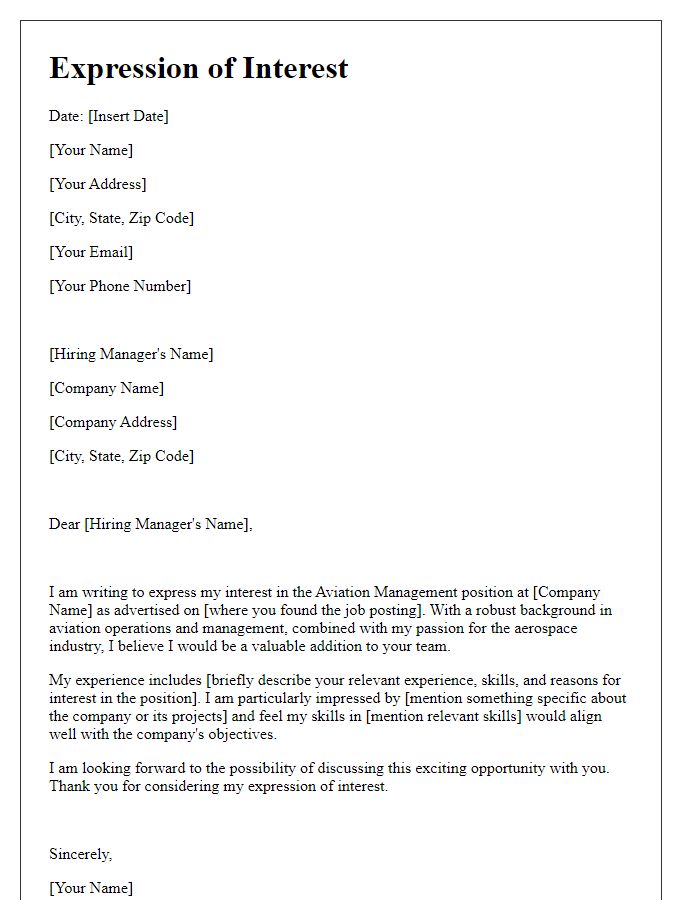

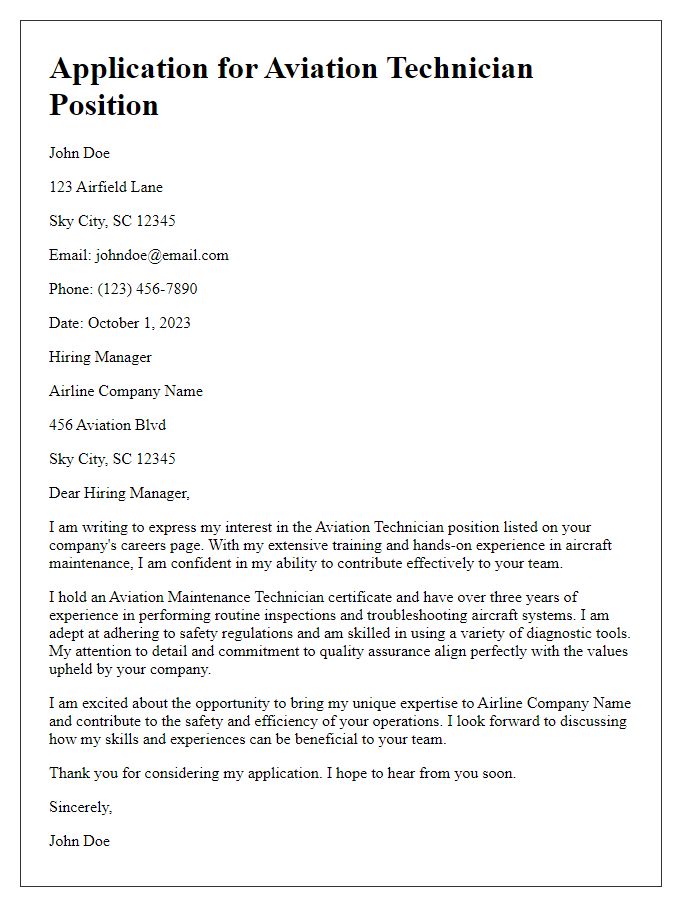
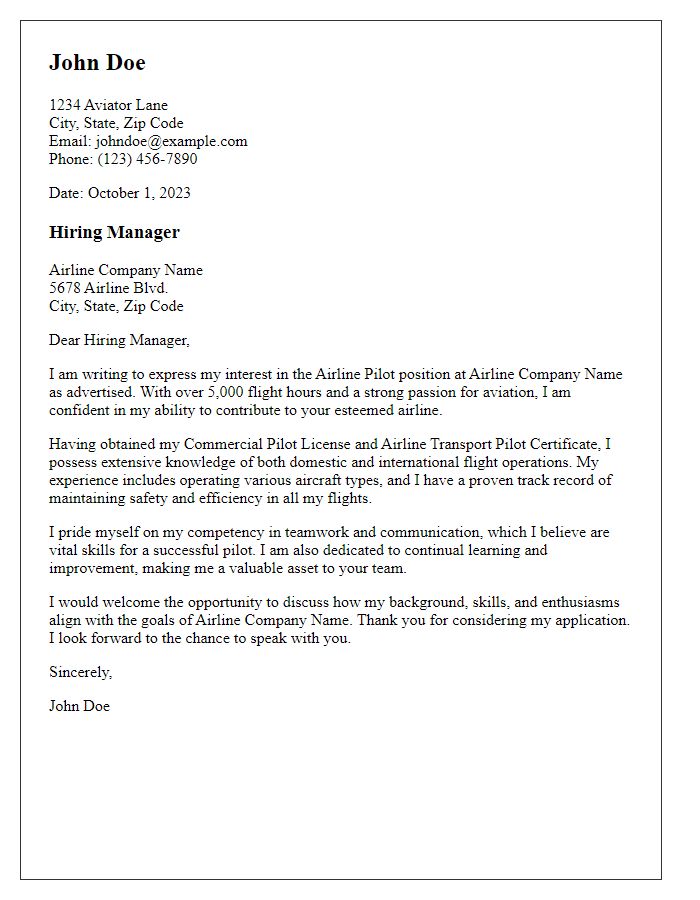
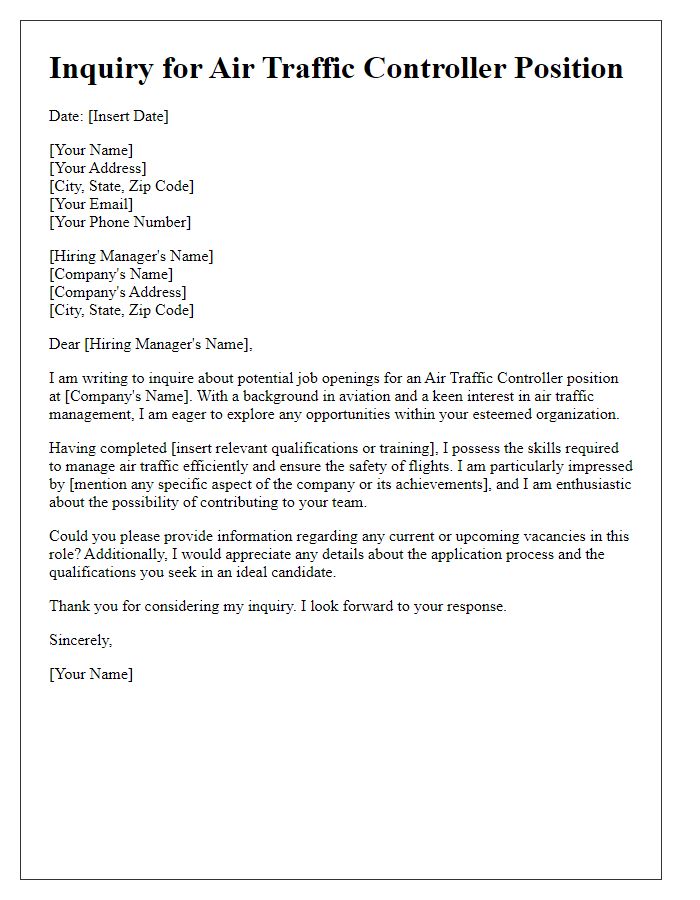
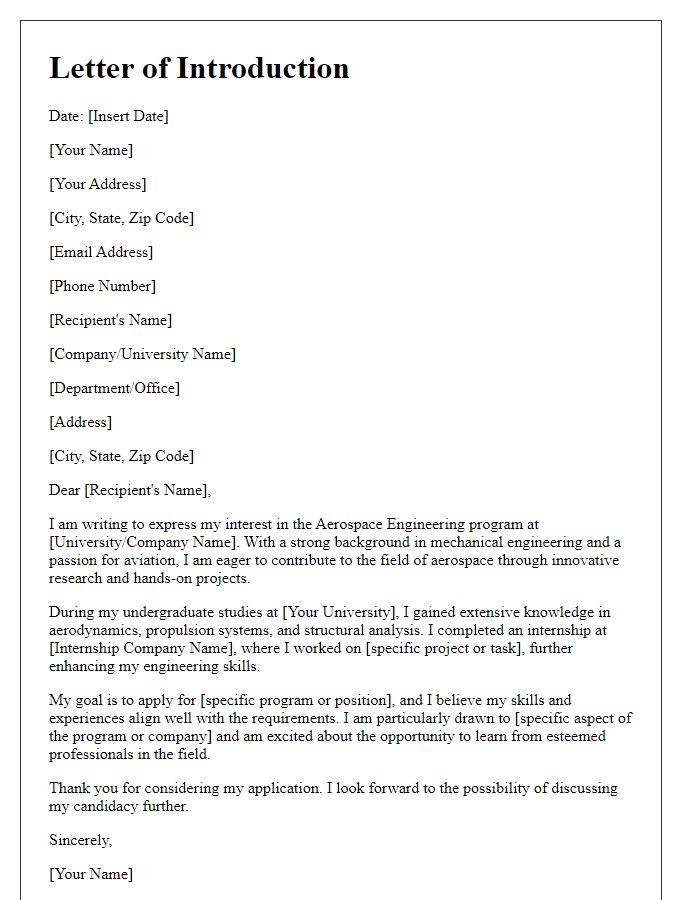
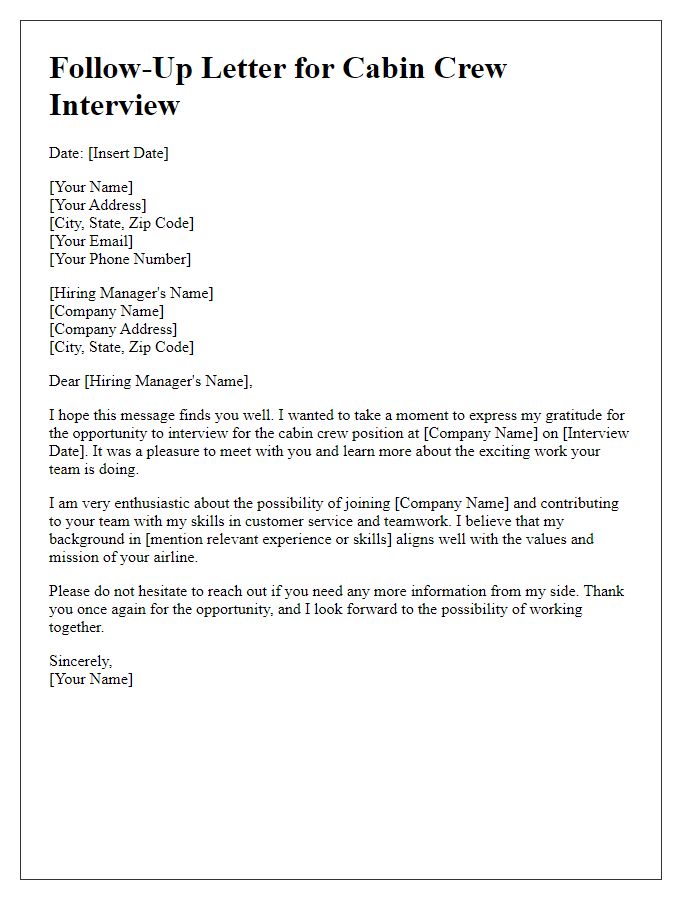
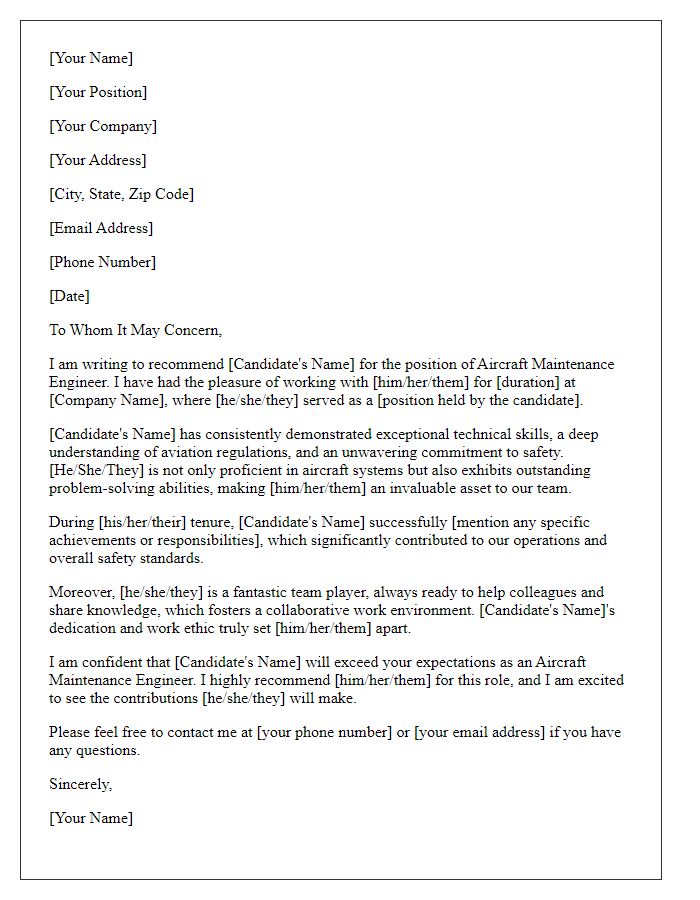
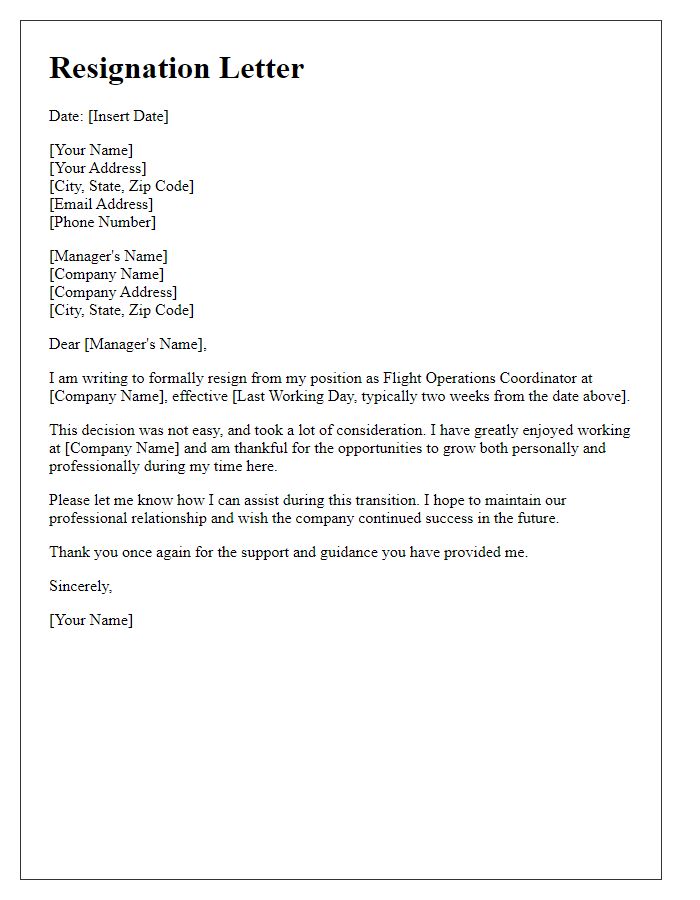
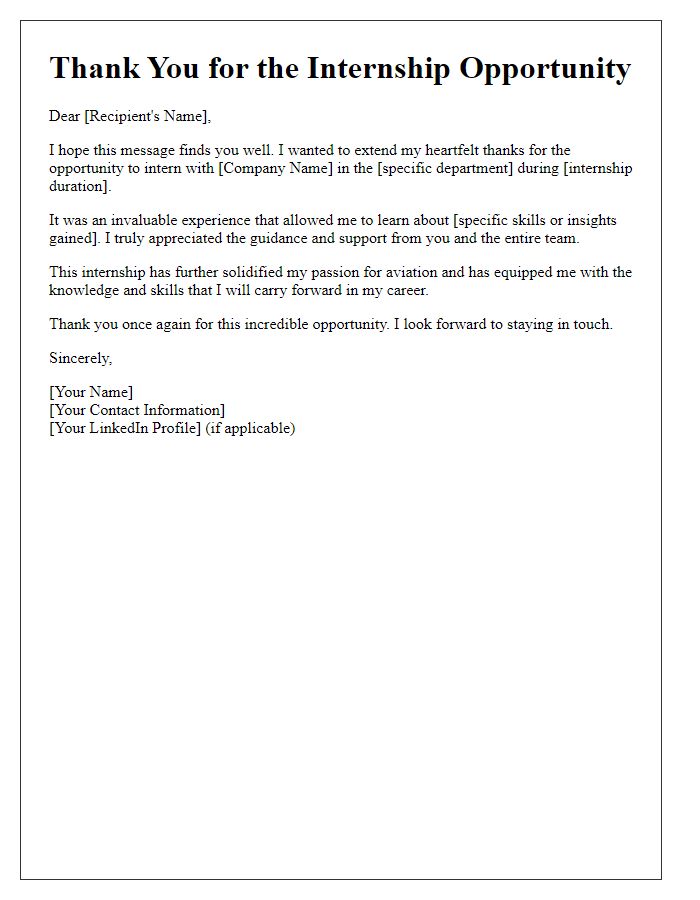
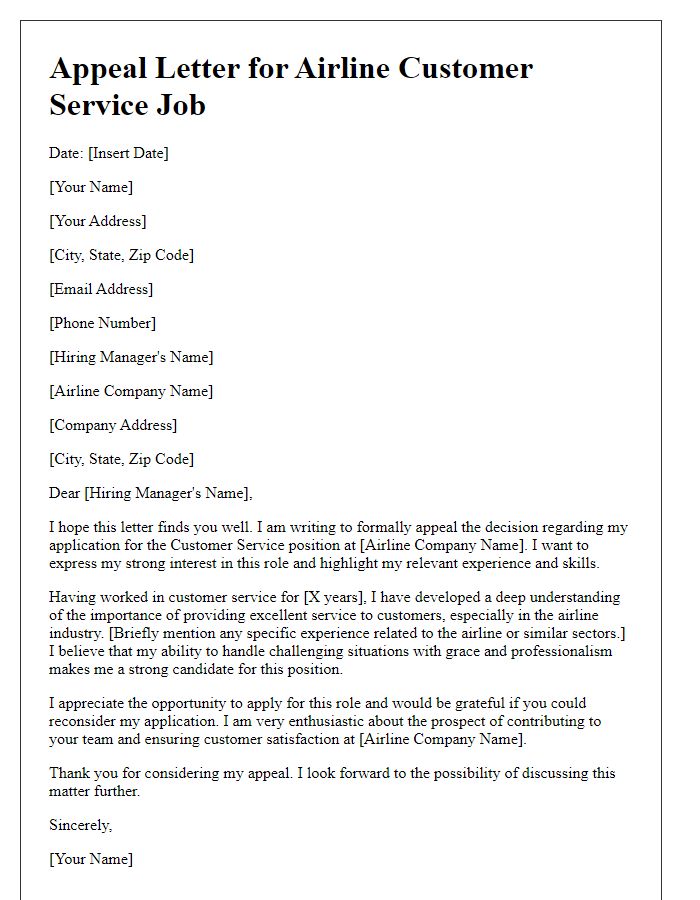


Comments